
Simon the Sorcerer is a 1993 point-and-click adventure game developed and published by Adventure Soft, for Amiga and MS-DOS. The game's story focuses on a boy named Simon who is transported into a parallel universe of magic and monsters, where he embarks on a mission to become a wizard and rescue another from an evil sorcerer. The game's setting was inspired by the novels of the Discworld series, and incorporates parodies on fantasy novels and fairy tales, such as The Lord of the Rings and Jack and the Beanstalk. The lead character's design was inspired by that of the fictional British television character Blackadder, with the character voiced by Chris Barrie in the CD re-release.

Bloodwych is a dungeon role-playing video game, a dungeon crawler, developed for the Amiga, Atari ST, MS-DOS, Amstrad CPC, Commodore 64, and ZX Spectrum. Its box featured artwork by Chris Achilleos. The plotline identifies the player as a champion of Trazere who, after recruiting up to three fellow champions, travels through dungeons and mazes fighting creatures along the way to find and destroy the evil Zendick, and banish the Lord of Entropy.

Bombuzal is a puzzle video game designed by Antony Crowther and David Bishop for Image Works. The game was released in 1988 for the Amiga, Atari ST and Commodore 64. It was also released in 1989 for MS-DOS and Dec, 21 1990 in Japan for the Super Famicom, with the North American version released on August, 1992 renamed as Ka-Blooey.

Top Banana is an environmentally-themed platform game produced by Hex and Psycore for the Acorn Archimedes in 1991 and ported to the Amiga and Atari ST in 1992. The chief artist and coder was Miles Visman, with supporting graphics and sound by Karel Dander, and supporting graphics by Sophie Smith, Robert Pepperell and Matt Black. Top Banana was released using recycled cardboard packaging, furthermore being advertised as being the 'first video game with recycled packaging'. Top Banana's plot is about trying to save the environment from pollution using love.
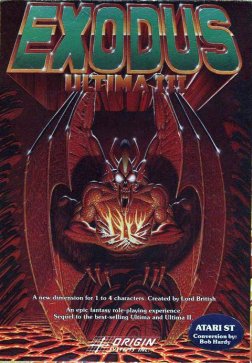
Ultima III: Exodus is the third game in the series of Ultima role-playing video games. Exodus is also the name of the game's principal antagonist. It is the final installment in the "Age of Darkness" trilogy. Released in 1983, it was the first Ultima game published by Origin Systems. Originally developed for the Apple II, Exodus was eventually ported to 13 other platforms, including a NES/Famicom remake.

Walker is a horizontally scrolling shooter video game developed by DMA Design and published by Psygnosis for the Amiga in February 1993. The player controls a bipedal mech and is tasked with killing advancing enemies in stages set in multiple time periods. Development of the game began after the release of Blood Money, but was scrapped in 1990 because the game was not coming together. By the end of the year, development had recommenced with a redesign, inspired by sprites originally intended for Blood Money. Ian Dunlop and Neill Glancy designed the game, and Raymond Usher wrote its soundtrack. The game was released to positive reviews with praise directed at the game's graphics and sound, but reviewers were critical towards the repetitiveness of the gameplay. Amiga Power ranked it among their top 100 Amiga games of 1993.

Obitus is an action-adventure game developed and released by Psygnosis in early 1991 for Amiga, Atari ST and DOS. It was also ported to the Super Nintendo Entertainment System by Bullet-Proof Software. The game features both first-person dungeon crawling and side-scrolling gameplay with action-oriented combat and an emphasis on item acquisition. It is similar to games like Eye of the Beholder on Super Nintendo but without the RPG mechanics.
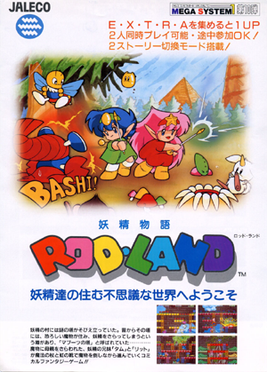
Rod Land, known in Japan as Yōsei Monogatari Rod Land, is a 1990 platform game originally developed and published in arcades by Jaleco.
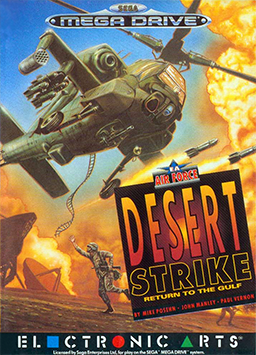
Desert Strike: Return to the Gulf is a shoot 'em up video game released by Electronic Arts (EA) in March 1992 for the Sega Genesis. The game was released on several other formats such as the Super Nintendo Entertainment System, including a much upgraded version for the Amiga home computer. The game was inspired by the Gulf War and depicts a conflict between an insane Middle Eastern dictator, General Kilbaba, and the United States. The player controls an Apache helicopter and attempts to destroy enemy weapons and installations, rescue hostages and capture enemy personnel, while managing supplies of fuel and ammunition.

Castle of Dr. Brain is an educational video game released in 1991 by Sierra On-Line. It is a puzzle adventure game.

Mean Streets is a graphic adventure game developed and published by Access Software for MS-DOS in 1989 exclusively in North America. It was ported to the Commodore 64, Atari ST, and Amiga in 1989 and 1990 by The Code Monkeys. Atari ST and Amiga ports were only released in Europe. The game, set in a dystopian cyberpunk neo-noir world, is the first in the series of Tex Murphy mysteries; its immediate sequel is Martian Memorandum. In 1998, Mean Streets was remade as Tex Murphy: Overseer.

Bomberman, also known as Dyna Blaster in Europe, is an action-maze video game originally developed and published by Hudson Soft for the PC Engine in Japan on 7 December 1990 and later in North America for the TurboGrafx-16 by NEC in 1991. Belonging to the Bomberman franchise, it is a re-imagining of the first game in the series starring White Bomberman on a quest to rescue Lisa, the kidnapped daughter of his inventor Dr. Mitsumori, from the castle of Black Bomberman while defeating evil monsters and villains that work for him. The game was later ported to home computers, each one featuring changes compared to the original version. Conversions for other platforms were in development but never released. The title garnered positive reception from critics since its initial release on the PC Engine/TurboGrafx-16 and later on home computers.

Gauntlet III: The Final Quest is a home computer game by U.S. Gold and Tengen it was released in 1991 for the Amiga, Atari ST, Commodore 64, ZX Spectrum, and Amstrad CPC. Besides the standard four main Gauntlet characters, Thor, Thyra, Merlin, and Questor, four new playable characters were available: Petras, a rock man; Dracolis, a lizard man; Blizzard, an ice man; and Neptune, a Merman. The game is viewed from an isometric perspective and the cooperative multiplayer mode supports two-players.
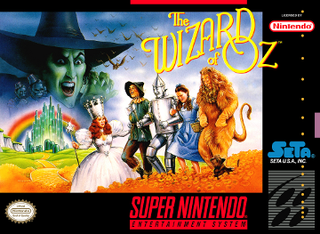
The Wizard of Oz is a 1993 platform video game released for the Super Nintendo Entertainment System and loosely based on the 1939 film The Wizard of Oz. Developed by Manley & Associates, it was published by SETA Corporation and released in North America in 1993 and in Europe in 1994. The player assumes the role of Dorothy, the Scarecrow, the Tin Man, or the Cowardly Lion in a series of levels containing hidden areas, mazes, and puzzles to bring Glinda's magic ruby slippers to the Wizard of Oz.

Cloud Kingdoms is a puzzle game published by Millennium Interactive for the Amiga, Atari ST, Commodore 64, and MS-DOS in 1990. The player controls Terry, a green bouncing sphere, on a quest to recover his magic crystals that have been stolen by Baron von Bonsai. To do so, he must travel through the eponymous Cloud Kingdoms, avoiding enemies and hazards while collecting all of the crystals within the game's time limit. The game was developed by Dene Carter at Logotron, with sounds and music composed by David Whittaker.

Total Eclipse is a first person adventure game released for the Amiga, Atari ST, Amstrad CPC, Commodore 64, MS-DOS and ZX Spectrum computers in 1988. It can also be considered an early example of a first-person shooter.

Austerlitz is a turn-based strategy video game developed by Personal Software Services and published by Mirrorsoft. It was released in the United Kingdom and Germany for the Amiga, Atari ST and MS-DOS home computers in 1989. It was also re-released in France for Amiga home computers by Mirror Image in 1991. The game is set during the Battle of Austerlitz of the Napoleonic Wars and revolves around Napoleon's forces defending the Austrian village of Austerlitz from the invading army of Alexander I of Russia.

Jurassic Park is a 1993 action video game developed and published by Ocean Software, for DOS and Amiga computers. The game is based on director Steven Spielberg's 1993 film, Jurassic Park, and also includes elements from author Michael Crichton's 1990 novel of the same name, which the film is based upon.

Indiana Jones in the Lost Kingdom is a puzzle video game developed by Michael J. Hanson and published by Mindscape for the Commodore 64. The game is based on the Indiana Jones series, and it was released in North America in late 1984. In the UK, the game was imported and distributed by U.S. Gold.
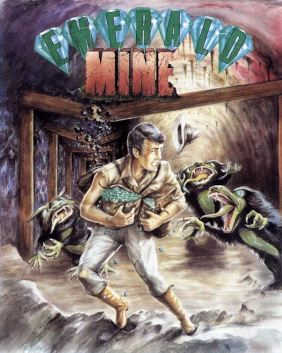
Emerald Mine is a 1987 puzzle video game developed and published for Amiga and Atari ST by Kingsoft. The series follows mines filled with various gems, such as emeralds. It is a Boulder Dash clone in which the player completes levels by collecting sufficient gems before reaching the exit. Emerald Mine was Kingsoft's best-selling title with reviews generally favorable, and spawned several sequels. It was also Volker Wertich's, one of the game's designers, most successful game until The Settlers in 1993, of which he was also the creator.





















